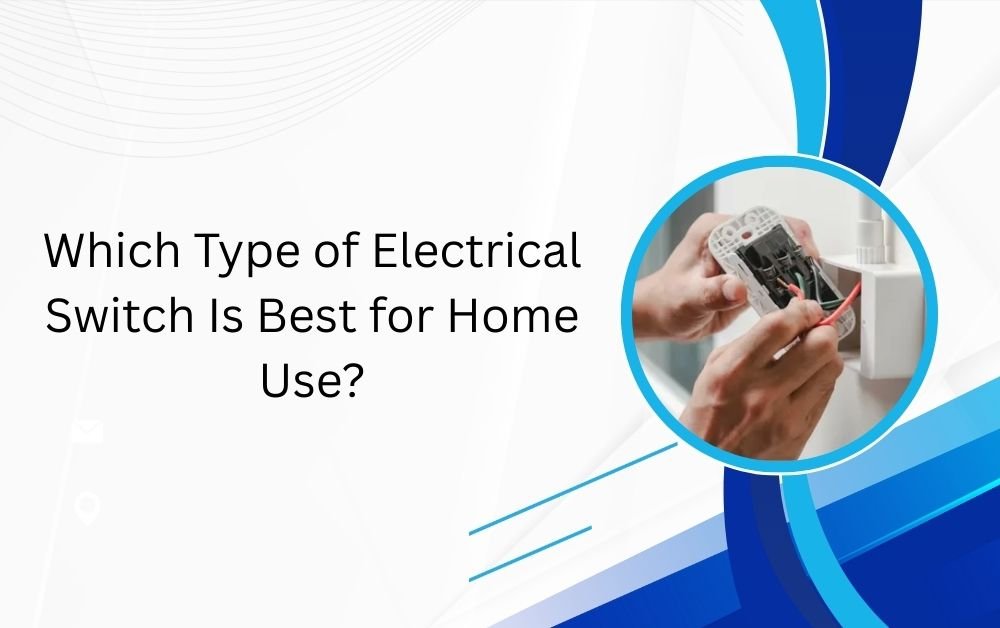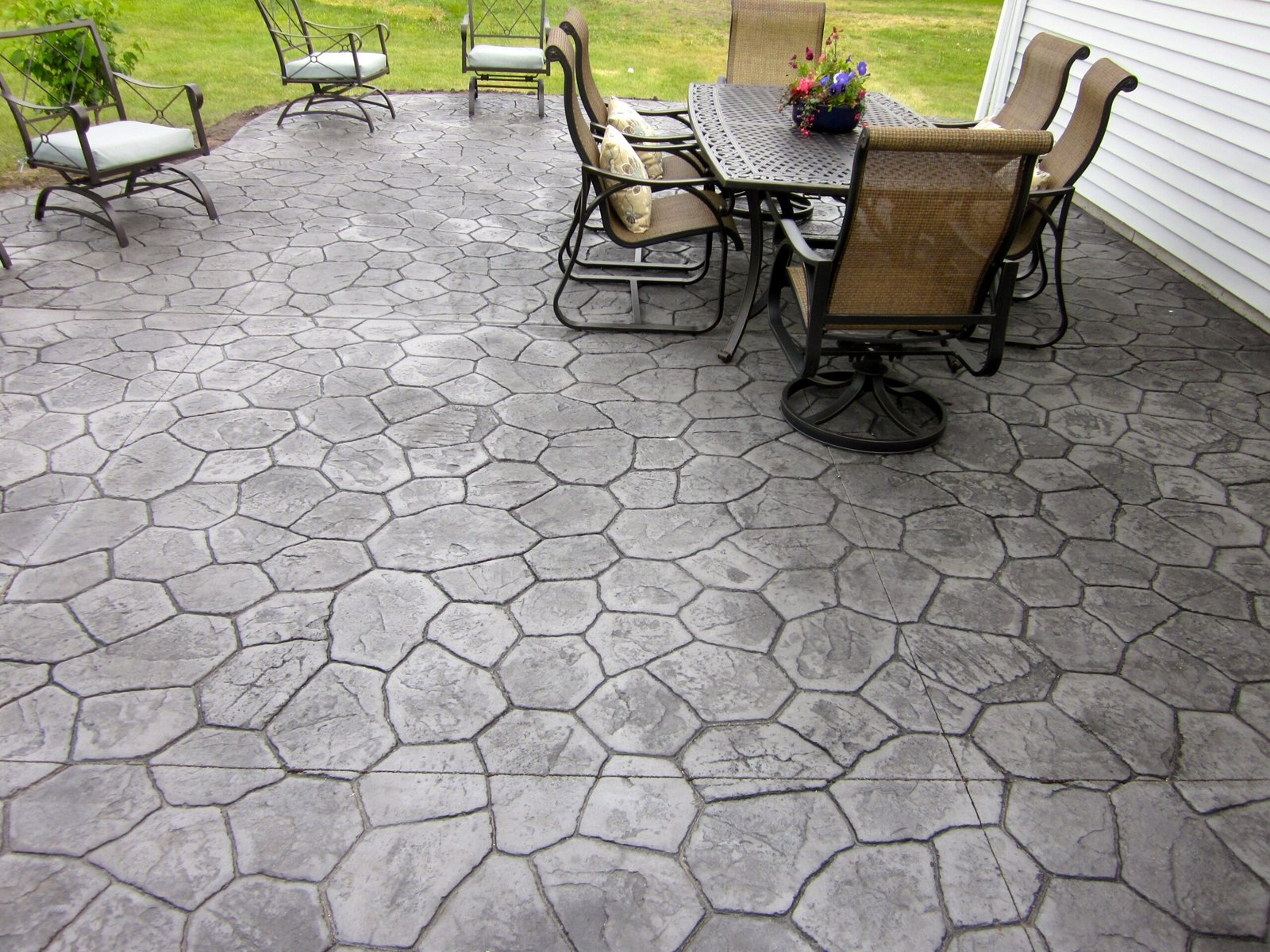When it comes to your home’s electrical system, choosing the right type of switch is crucial for both safety and convenience. With so many options available in the market, it can be overwhelming to know which one to pick. Whether you’re renovating your home or replacing old switches, understanding the different types of switches can help you make a better decision.
In this blog, we will explore the various types of electrical switches that are best for home use, their features, advantages, and the factors you need to consider before making your choice.
Understanding Electrical Switches
Before diving into the different types of switches, it’s important to understand what an electrical switch is and how it works.
An electrical switch is a device used to control the flow of electricity in a circuit. By opening or closing the circuit, a switch allows or stops the flow of power to an appliance or a light. You use switches every day to control things like lights, fans, and other electrical appliances in your home.
Switches are made of durable materials, including plastic and metal, and come in various shapes and sizes. Some are simple, while others come with additional features like dimming controls or timers.
NOTE: If you’re experiencing issues with your outlets or switches, don’t wait until the problem worsens! Our Outlet and Switches Repair Services in Dubai are here to ensure your home’s electrical system is safe, efficient, and fully functional. Contact us today for fast, reliable, and professional repair services that you can trust.
Types of Electrical Switches
When choosing a switch for your home, it’s essential to know the types available. Here’s an overview of the most common types of electrical switches.

Single-Pole Switches
A single-pole switch is one of the most common types of switches used in homes. It controls a light or appliance from a single location, making it perfect for rooms where you only need to turn something on or off from one spot.
Advantages of Single-Pole Switches
- Simple and easy to use: Single-pole switches are straightforward to operate. They only have two positions—on and off.
- Affordable: They are generally less expensive than other switch types, making them a great budget-friendly option.
- Ideal for smaller spaces: These switches work well in rooms like bedrooms, hallways, and kitchens, where you don’t need to control lights from multiple points.
Disadvantages of Single-Pole Switches
- Limited control: If you need to control a light from multiple locations (e.g., in a large living room), a single-pole switch may not be suitable.
Three-Way Switches
A three-way switch allows you to control a light or appliance from two different locations. It’s commonly used in areas like stairways, hallways, or large rooms with multiple entrances. If you need to turn a light on at one end of the room and off at the other, a three-way switch is the solution.
Advantages of Three-Way Switches
- Convenience: They provide the flexibility to control lights from two different places, making them ideal for hallways, staircases, and large rooms.
- Enhanced safety: No need to walk to one side of the room to turn the light off when exiting. This can be helpful for safety and convenience.
Disadvantages of Three-Way Switches
- Complex installation: Installing a three-way switch is more complicated than a single-pole switch, and you may need professional help to set it up.
Dimmer Switches
Dimmer switches are a great option if you want to control the brightness of your lights. They allow you to adjust the intensity of the light, making it perfect for setting the mood or conserving energy.
Advantages of Dimmer Switches
- Energy-saving: By dimming the lights, you can reduce energy consumption, which can lower your electricity bill.
- Customizable lighting: Dimmer switches let you set the lighting level according to your needs. Whether you need bright lighting for reading or a soft glow for relaxing, a dimmer switch gives you control.
- Perfect for different spaces: They are ideal for living rooms, dining rooms, or bedrooms where adjustable lighting is important.
Disadvantages of Dimmer Switches
- Compatibility: Not all bulbs work well with dimmer switches. It’s essential to check whether the light bulbs you use are compatible with dimming features.
- Cost: Dimmer switches can be a bit more expensive than regular switches, and the installation may also be pricier.
Push-Button Switches
A push-button switch is another type of electrical switch that is becoming increasingly popular, especially for modern homes. Instead of flipping a switch, you press a button to control the flow of electricity.
Advantages of Push-Button Switches
- Sleek design: Push-button switches have a modern, clean appearance and can add a touch of sophistication to your home’s decor.
- Ease of use: They are easy to use and are often smoother to operate than traditional toggle switches.
Disadvantages of Push-Button Switches
- Limited availability: While they are stylish, push-button switches are not as common as other types of switches and may not be available in every style or finish.
Toggle Switches
A toggle switch is one of the oldest and most familiar types of electrical switches. It has a small lever that you push up or down to turn a light on or off. Toggle switches are widely used in residential settings and can handle moderate electrical loads.
Advantages of Toggle Switches
- Simple operation: Toggle switches are easy to use, making them a great choice for families with children or elderly individuals who may need simpler controls.
- Durability: Toggle switches are reliable and last a long time with minimal maintenance.
- Variety of designs: They come in different shapes, colors, and finishes, so you can match them to your home’s style.
Disadvantages of Toggle Switches
- Less stylish: While toggle switches are functional, they are often seen as outdated compared to more modern designs like push-button or rocker switches.
Rocker Switches
Rocker switches are similar to toggle switches, but instead of a small lever, they have a wide button that rocks back and forth to control the electrical flow.
Advantages of Rocker Switches
- Easy to use: Rocker switches are large and easy to operate, making them a good option for individuals with limited hand strength or mobility.
- Modern appearance: These switches are often found in contemporary homes due to their sleek design.
- Durability: Rocker switches are built to last and are resistant to damage, which makes them a good investment.
Disadvantages of Rocker Switches
- Installation: Depending on the design, rocker switches can be more difficult to install than simple toggle switches.
Factors to Consider When Choosing the Best Switch for Your Home
When deciding which type of electrical switch is best for your home, there are several important factors to consider. These factors can help you choose the right switch that suits your needs and ensures your home’s electrical system is both safe and efficient.
1. Location of the Switch
Think about where the switch will be installed. For example, if you need to control a light from multiple locations, a three-way switch will be your best option. In spaces where you don’t need multiple control points, a simple single-pole switch will do.
2. Aesthetic Preferences
Different switches come in various styles, materials, and finishes. You may want to consider the design of the switch to match the overall decor of your home. Modern homes might prefer push-button or rocker switches, while traditional homes may go for toggle switches.
3. Energy Efficiency
If you’re looking to reduce your energy consumption, dimmer switches are a great option. They allow you to adjust the brightness of your lights, which can lead to significant energy savings over time. Also, consider LED-compatible dimmers if you use LED lights.
4. Cost and Budget
Switches vary in price, so it’s essential to set a budget. Basic switches like single-pole or toggle switches are more affordable, while dimmers or specialized switches (like smart switches) can cost more.
5. Installation Process
Some switches, like three-way switches or dimmers, may require more complicated installation. If you’re comfortable with electrical work, you may want to handle the installation yourself, but for more complex setups, it’s always best to call a professional electrician.
Conclusion
Choosing the right type of electrical switch for your home is more than just about convenience; it’s about safety, energy efficiency, and the overall design of your living space. Whether you prefer the simplicity of a single-pole switch or the modern touch of a dimmer, understanding your options and the factors that influence your decision will help you make the best choice.
Remember, always prioritize safety, and when in doubt, consult with a licensed electrician to ensure that the switch you choose is installed correctly and safely.
For more insightful articles related to this topic, feel free to visit techners












Leave a Reply